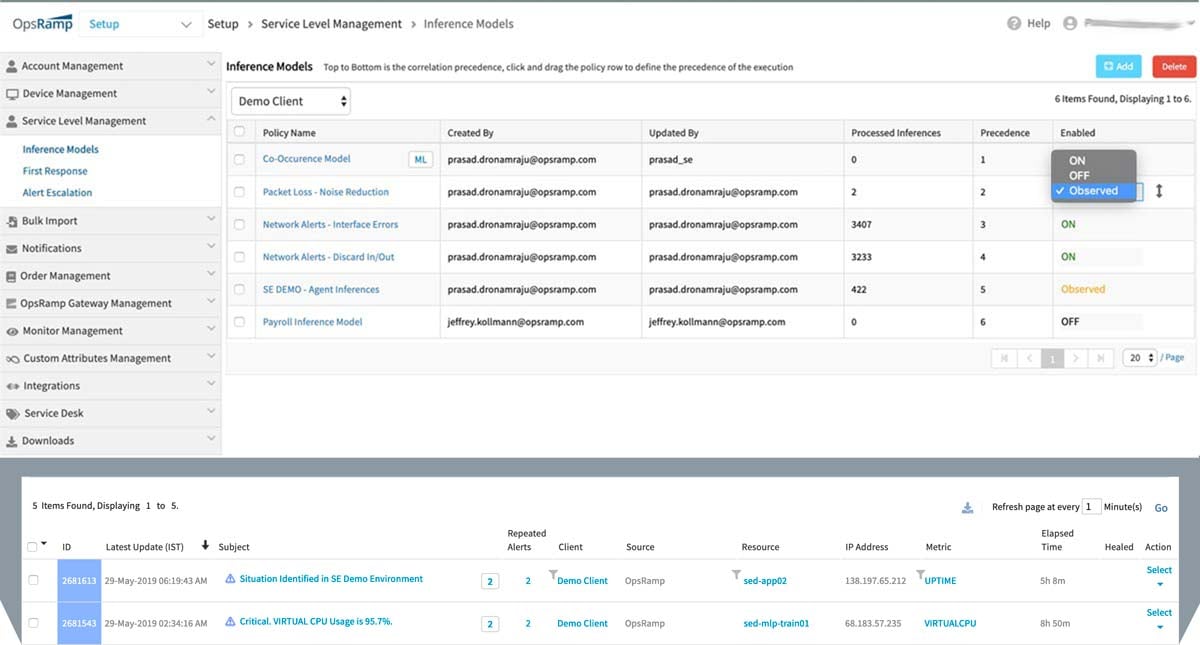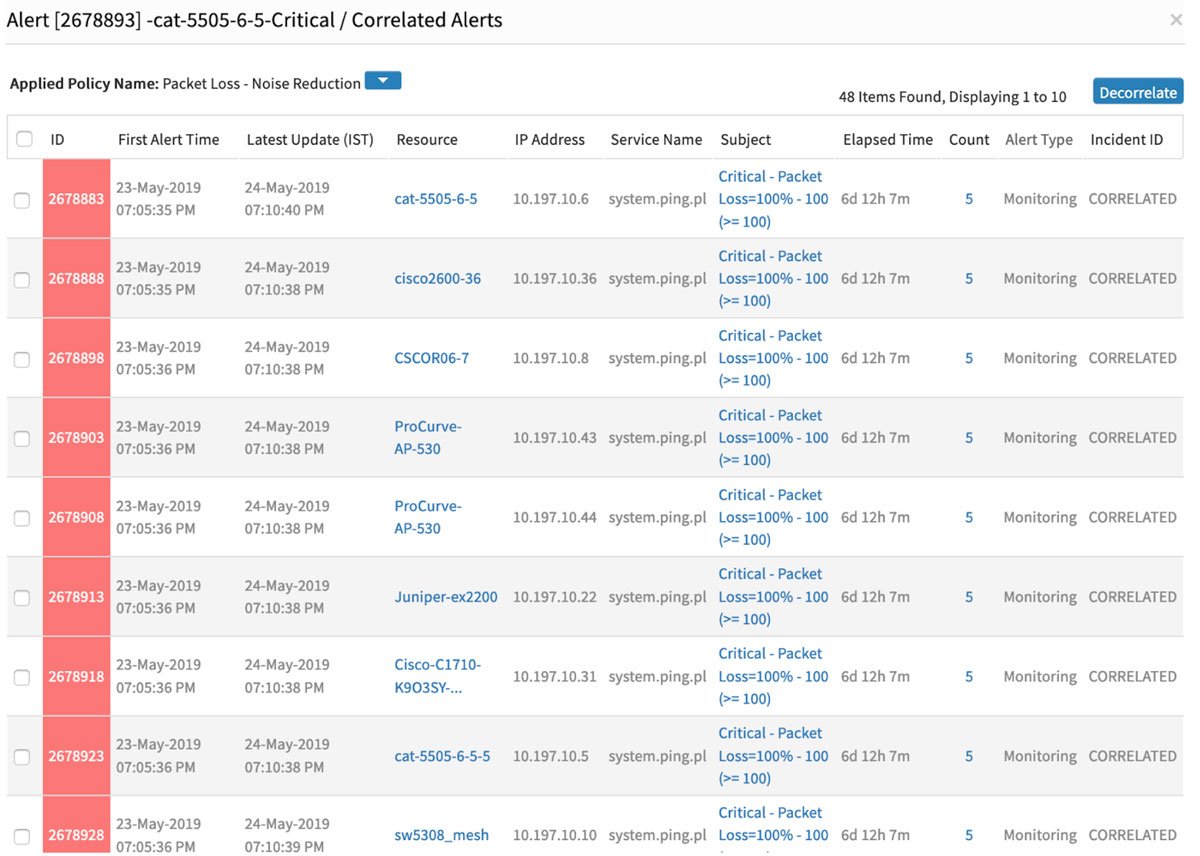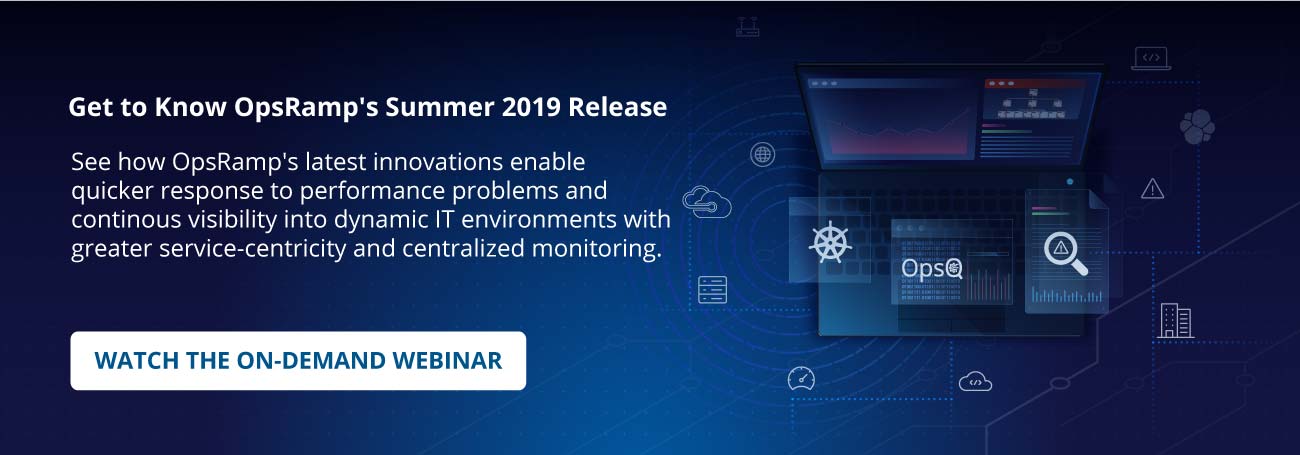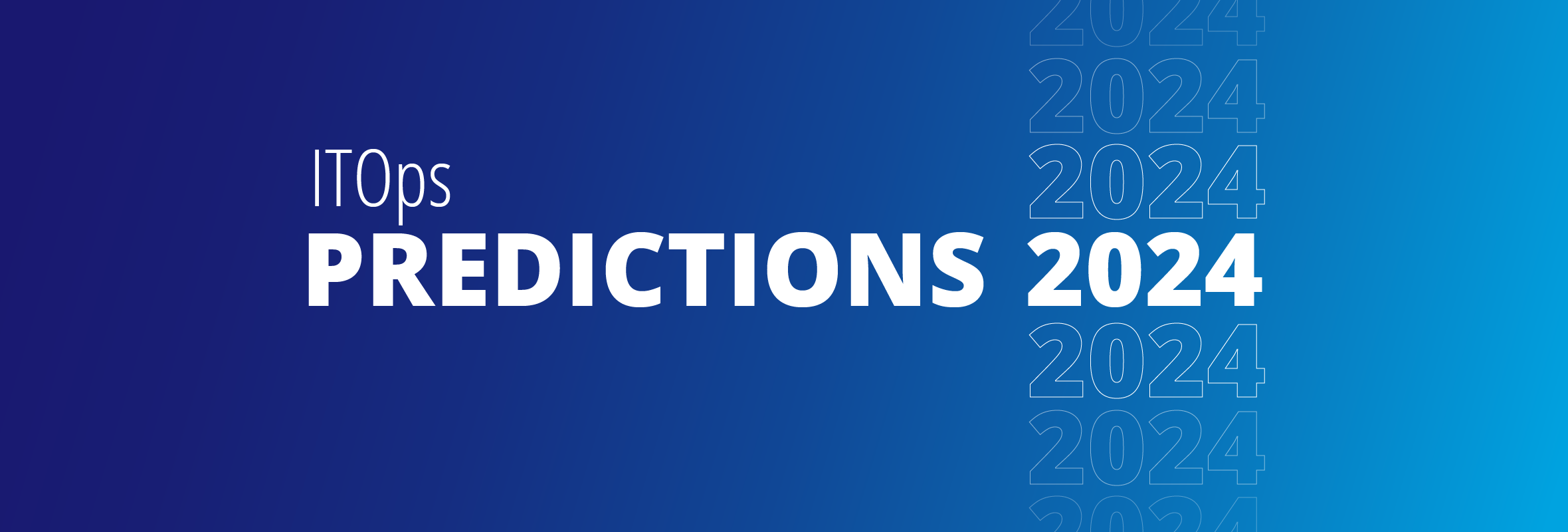Overcoming Human Resistance to AIOps Recommendations
By 2021, IDC’s Worldwide CIO Agenda 2019 Predictions expects that 70% of CIOs will invest in machine learning and data science techniques for greater agility and innovation in IT operations management. In an AI-enabled future, enterprises will increasingly rely on advanced analytics to address a variety of IT operations use cases, including problem recognition, impact analysis, anomaly detection, root cause analysis, and incident resolution.
While consumers do rely on invisible algorithms while buying a book on Amazon, watching a movie on Netflix, or listening to a band on Spotify, widespread concerns exist on the transparency, accountability, and effectiveness of AI-based recommendations. OpsRamp’s recently released State of AIOps report found that “67% of respondents have concerns about the relevance and reliability of the insights delivered by AIOps tools.”
As machine intelligence takes on critical responsibilities across IT operations functions, technology executives need to quickly build trust and confidence in analytical approaches for IT performance management. Given that machine learning-based recommendations are often opaque and difficult to understand, how do IT practitioners overcome algorithmic aversion and ensure explainability for AIOps insights?
OpsQ Observed Mode: Bridging the Trust Gap for AIOps
OpsRamp’s service-centric AIOps platform is all about ensuring the reliability and availability of business-critical enterprise services. We are now introducing OpsQ Observed Mode in the Summer 2019 Release to speed up the adoption of machine learning capabilities for IT event correlation and help DevOps teams learn how AIOps tools arrive at a specific causal analysis outcome.
OpsQ is OpsRamp’s intelligent event management, alert correlation, and remediation solution. OpsQ Observed Mode helps IT teams understand the potential for event volume reduction by simulating alert inferencing in shadow mode. Without creating an actual inference, OpsQ Observed Mode lets IT teams build a comprehensive assurance model for machine learning-powered event correlation across modern and legacy workloads.

Figure 1 - OpsQ Observed Mode lets incident management teams access the power of AIOps recommendations in shadow mode.
With just a toggle at setup, incident management teams can view shadow inferences that showcase event correlation patterns for live alert streams by enabling OpsQ Observed Mode. Observed Mode lets IT pros preview the efficacy of OpsQ’s alert inference models (algorithmic and co-occurrence) before they enable AIOps in production environments.
Think of OpsQ Observed Mode as a means to quickly initiate and pilot AIOps deployments without disturbing existing incident management workflows. OpsQ Observed Mode lets IT teams not only examine algorithmic recommendations for alert correlation but also optimize the OpsQ engine to suit their operational needs.
OpsRamp’s service-centric AIOps platform consumes a wide variety of native and third-party events from different IT management tools, normalizes and analyzes alerts in its data lake for meaningful pattern recognition, and then escalates multi-channel alert notifications using on-call schedules. Observed Mode helps incident response teams see intelligent event correlation in action without actually turning on the OpsQ engine. IT teams can use OpsQ Observed Mode to assess how an AIOps platform can effectively detect anomalies across dynamic workloads, figure out which business-critical services are down, and assign root cause(s) to outstanding incidents.

Figure 2 - Identify critical and degraded network mesh performance with OpsQ Observed Mode.
Next Steps:
- Learn why 451 Research recognized OpsRamp in its annual Market Map for Application and Infrastructure Performance.
- Schedule a custom demo with an OpsRamp solution expert.
- Follow us on Twitter, LinkedIn, and YouTube.






